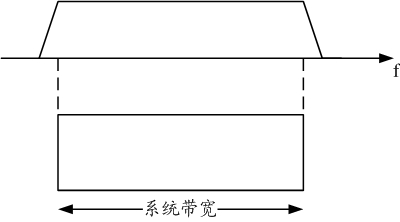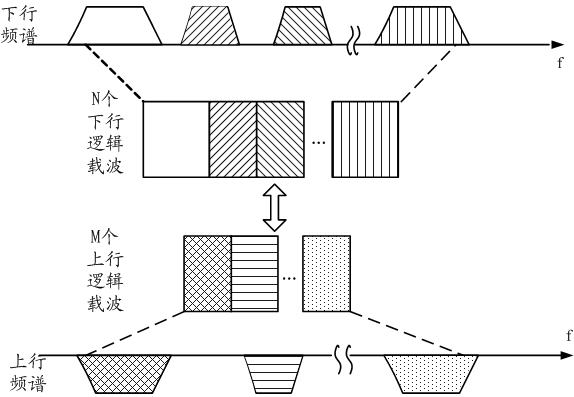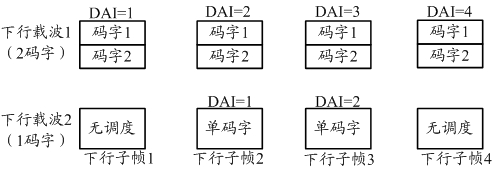Method and device for processing acknowledgement (ACK)/negative acknowledgment (NACK) feedback bit
A technology of feedback bits and processing methods, applied in the field of communication, can solve problems such as inconsistency of understanding, affecting system retransmission performance, etc., and achieve the effect of improving transmission reliability and system retransmission efficiency
- Summary
- Abstract
- Description
- Claims
- Application Information
AI Technical Summary
Problems solved by technology
Method used
Image
Examples
Embodiment 1
[0045] Embodiment 1 of the present invention provides a method for processing ACK / NACK feedback bits, such as Figure 4 As shown, the method includes the following steps:
[0046] Step 401, the UE receives data on N downlink carriers and M downlink subframes.
[0047] Wherein, N≥1, M≥1, ACK / NACK feedback information of M downlink subframes is transmitted in the same uplink subframe.
[0048] When the UE determines that there is no semi-persistent scheduling SPS physical downlink shared channel PDSCH transmission without a corresponding downlink control channel PDCCH on a downlink carrier, or there is an SPS PDSCH transmission without a corresponding PDCCH, and receives a downlink allocation index DAI value equal to M when the PDCCH is received , and execute step 402;
[0049] When the UE determines that there is SPS PDSCH transmission without a corresponding PDCCH on one downlink carrier and no PDCCH with a DAI value equal to M is received, step 403 is performed.
[0050] S...
Embodiment 2
[0066] The second embodiment of the present invention provides a method for processing ACK / NACK feedback bits. The UE needs to feed back ACK / NACK information corresponding to four downlink subframes in one uplink subframe (ie, M=4), and downlink subframe 3 is an SPS subframe. frame, the base station schedules dynamic PDSCH in downlink subframe 3, and the base station schedules 4 subframes in downlink carrier 1 and 3 subframes in downlink carrier 2, such as Figure 5A The schematic diagram of the transmission at the base station side is shown.
[0067] The UE does not receive the PDCCH in the downlink subframe 3 of the downlink carrier 1 (that is, the dynamic scheduling is lost), but the DAI value in the PDCCH in the downlink subframe received by the UE last on the downlink carrier 1 is 4, which is equal to M, like Figure 5B The schematic diagram of UE receiving is shown.
[0068] Let the ACK / NACK feedback bit sequence corresponding to the downlink carrier c be , where c i...
Embodiment 3
[0074] The third embodiment of the present invention provides a method for processing ACK / NACK feedback bits. The UE needs to feed back ACK / NACK information corresponding to four downlink subframes in one uplink subframe (ie, M=4), and downlink subframe 3 is an SPS subframe. frame, the base station dynamically schedules downlink subframes 1, 2 and 4 on downlink carrier 1, and dynamically schedules downlink subframes 2 and 3 on downlink carrier 2, such as Figure 6A The schematic diagram of the transmission at the base station side is shown.
[0075] The UE does not receive the PDCCH in the downlink subframe 2 of the downlink carrier 1 (that is, the dynamic scheduling is lost), and does not receive the PDCCH in the downlink subframe 3 of the downlink carrier 2 (that is, the dynamic scheduling is lost), such as Figure 6B The schematic diagram of UE receiving is shown.
[0076] Let the ACK / NACK feedback bit sequence corresponding to the downlink carrier c be , where c is the ...
PUM
 Login to View More
Login to View More Abstract
Description
Claims
Application Information
 Login to View More
Login to View More - R&D
- Intellectual Property
- Life Sciences
- Materials
- Tech Scout
- Unparalleled Data Quality
- Higher Quality Content
- 60% Fewer Hallucinations
Browse by: Latest US Patents, China's latest patents, Technical Efficacy Thesaurus, Application Domain, Technology Topic, Popular Technical Reports.
© 2025 PatSnap. All rights reserved.Legal|Privacy policy|Modern Slavery Act Transparency Statement|Sitemap|About US| Contact US: help@patsnap.com



